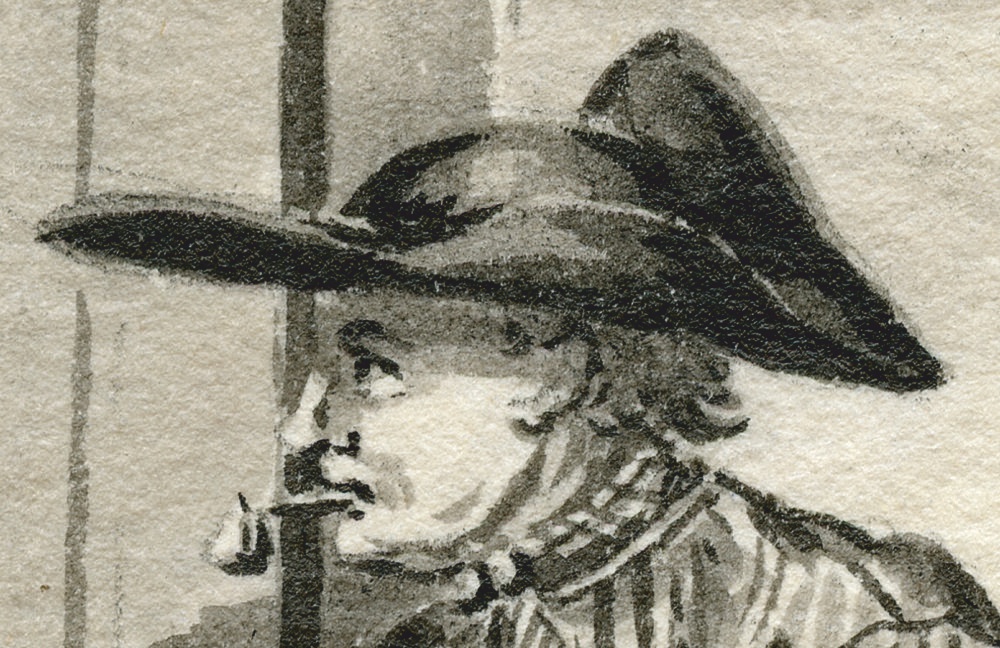
HAT FASHION
Can you imagine that this detail was painted on thin paper of ± 20 by 15 mm.?

It's just one example of how much detail the artist was able
to put in each design.
But this detail also shows the hat wear, that was popular during most of the
18th century: the tricorne or tricorn.
Tricornes had a rather broad brim, pinned up on either side of the head and at
the back, producing a triangular shape. It was usually worn with one point
forward.

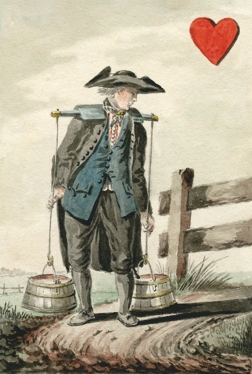
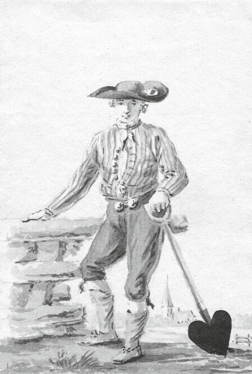
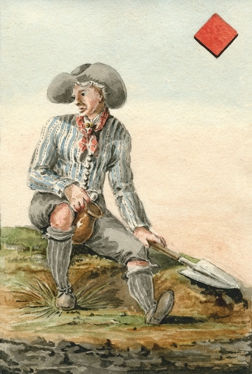
It's probably not a coincidence that this type of hat is used on all the jacks. They represent simple countrymen. By the end of the 18th century this type of hat was still popular among common people. But since around 1790 a new hat fashion was widely adopted: the bicorne or bicorn. At first it was introduced as part of the military uniforms of generals and high ranking officers, but later government officials would be wearing bicornes too. On the 9 of diamonds we find such an official, wearing a bicorn with a Napoleonic cockade. This could refer to the period (1806 - 1810) in which the Kingdom of Holland was ruled by Louis Napoleon Bonaparte, a brother of Napoleon Bonaparte. But it could also refer to the period (1810 -1815) in which the Netherlands were part of the French empire.
|
|
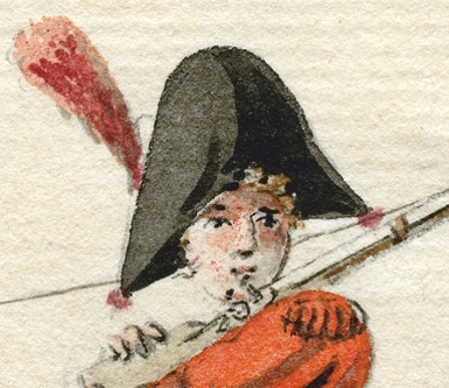 |
|
|
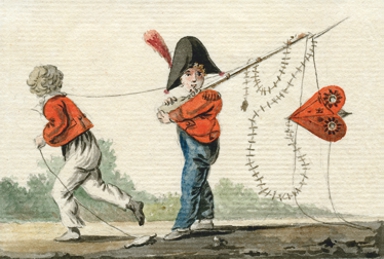 |
The little boy wears a bicorne, because he has been dressed up as a soldier, complete with a musket.
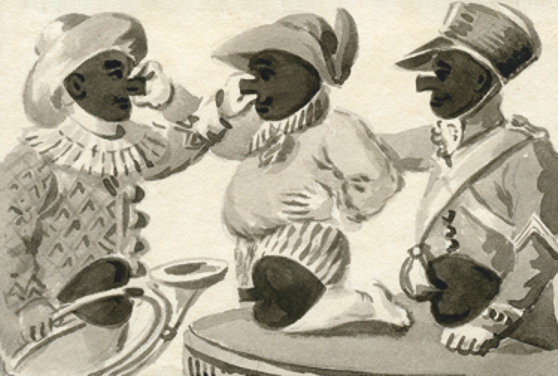 |
|
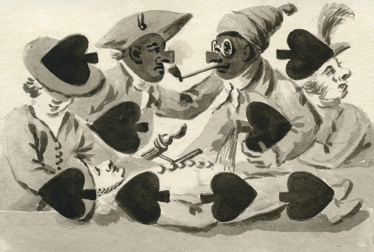 |
On the 6 of spades there's a good example of the shako. This hat came in use since around 1800 as a military hat for the common soldiers and officers. |
|
On the 6 and 10 of spades the overall designs seem to have been drawn in a bit cruder way. There's not as much fine detail as found in the other cards. At first I thought that maybe these cards had been painted by a different artist, but besides the lesser details there's no apparent breach of style. Maybe these were the last two cards to finish and maybe the artist had a deadline. Or maybe he just lost his one-haired brush...... we will never know. There's no indication to the name of the artist either. No signature or initials were found on any of the cards, so of the "who-where-when and why" question the first remains unanswered. The "why" also remains a mystery. Was it meant to be printed? Although each card was cut to size by hand, the cards certainly weren't meant to play with. For that the used paper is too thin. |
-1-
-2- -3-
-4- -5-
-6- -7-
DXPOHOME